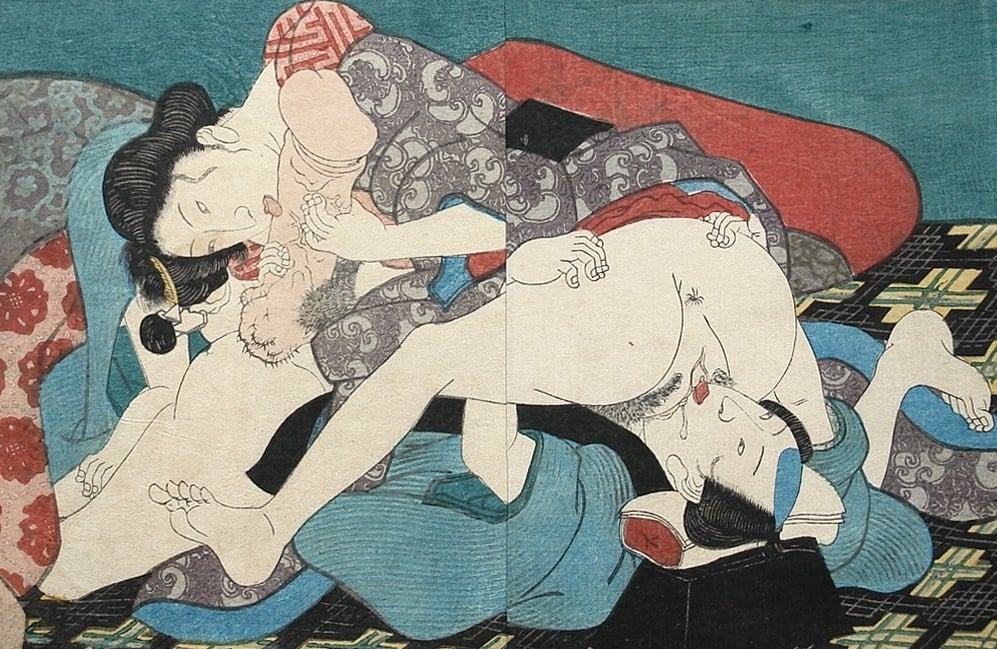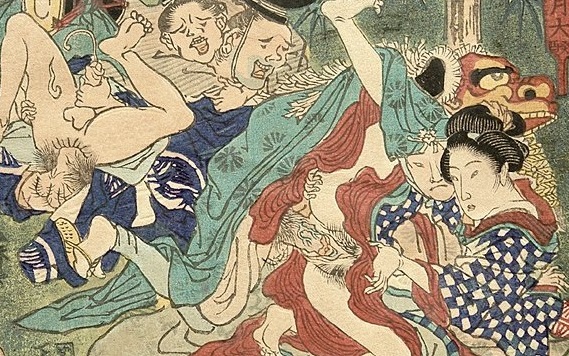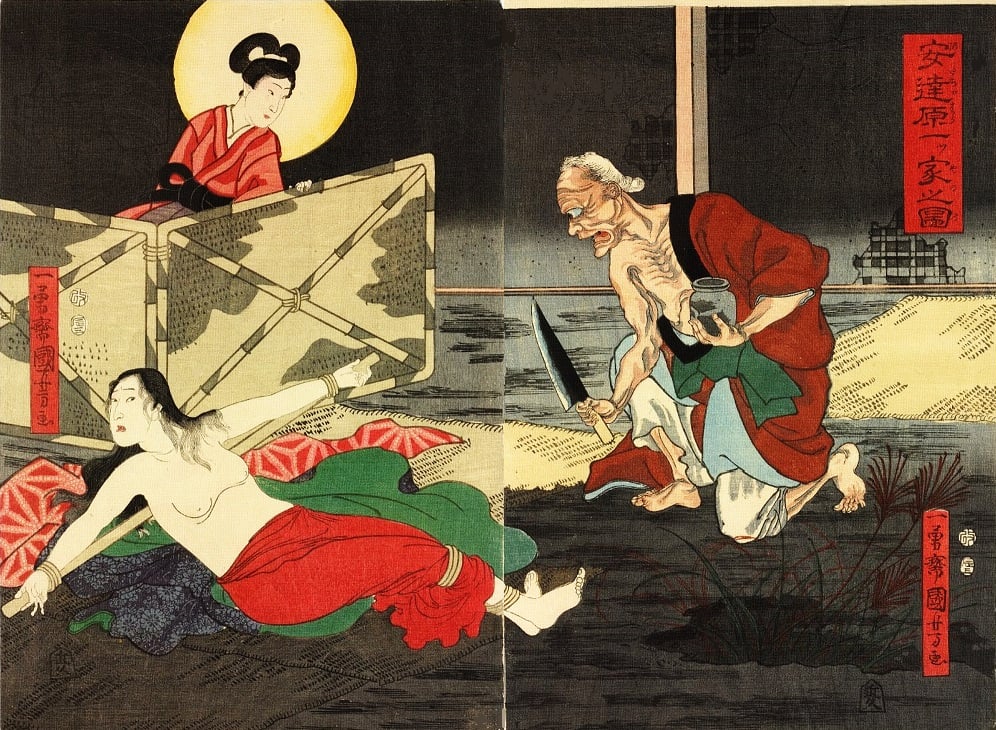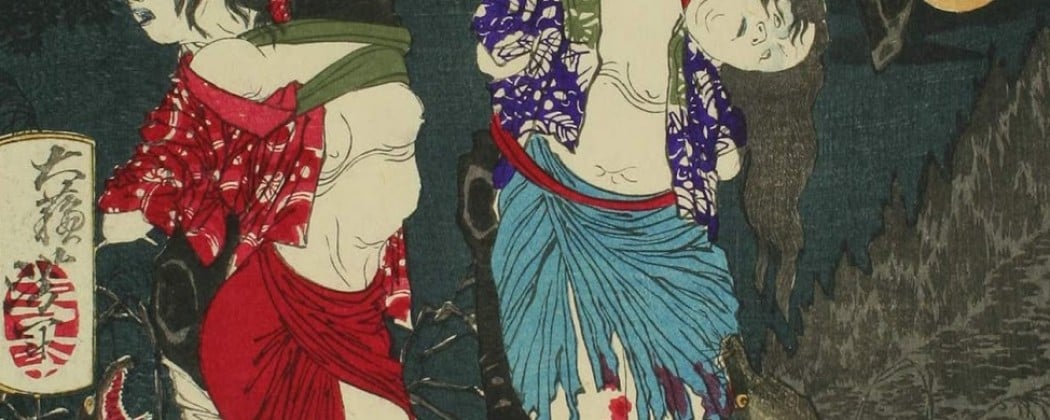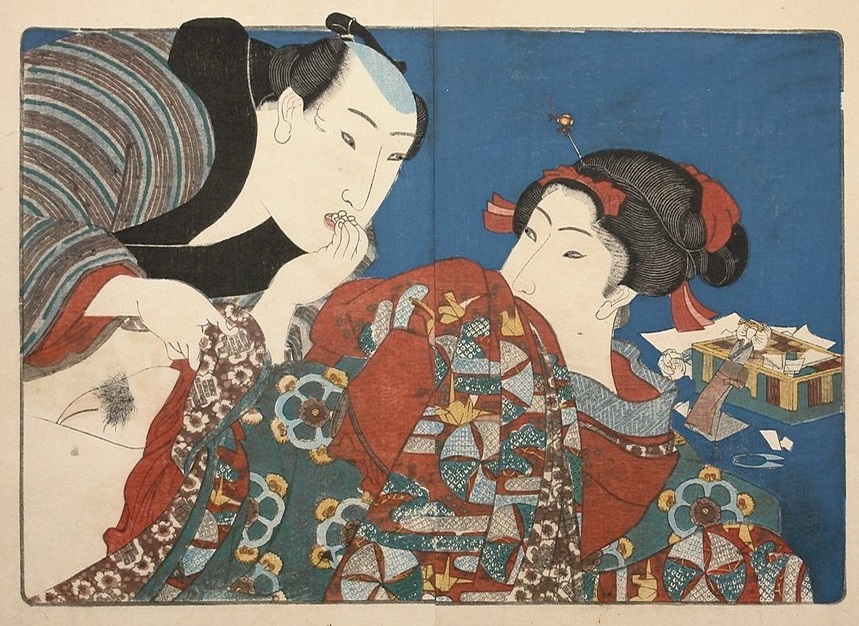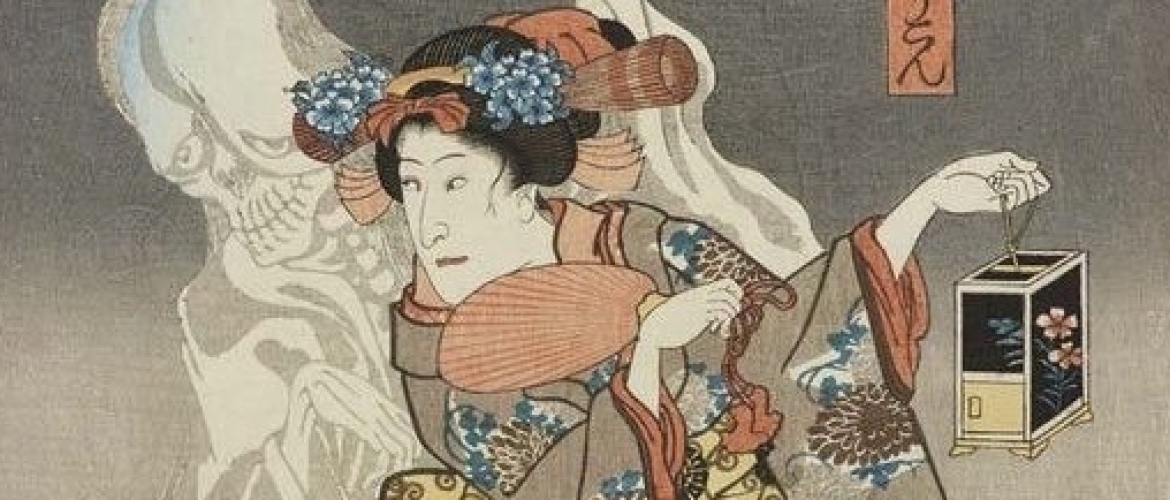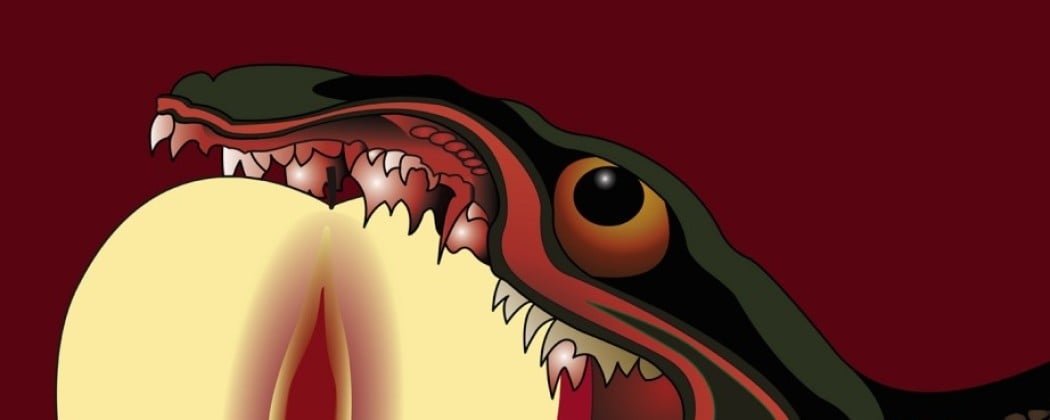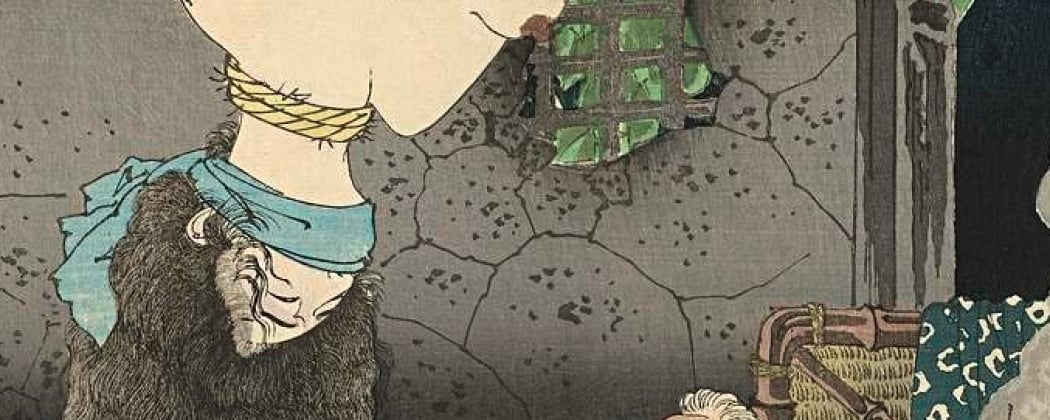
Today let’s take a closer look at one of the more subversive and influential art pieces of the Meiji era (1868-1912) produced by the legendary Tsukioka Yoshitoshi (1839-1892). The design that for instance had a major impact on the start of the kinbaku (bondage art) art of Seiu Ito (1882-1961).
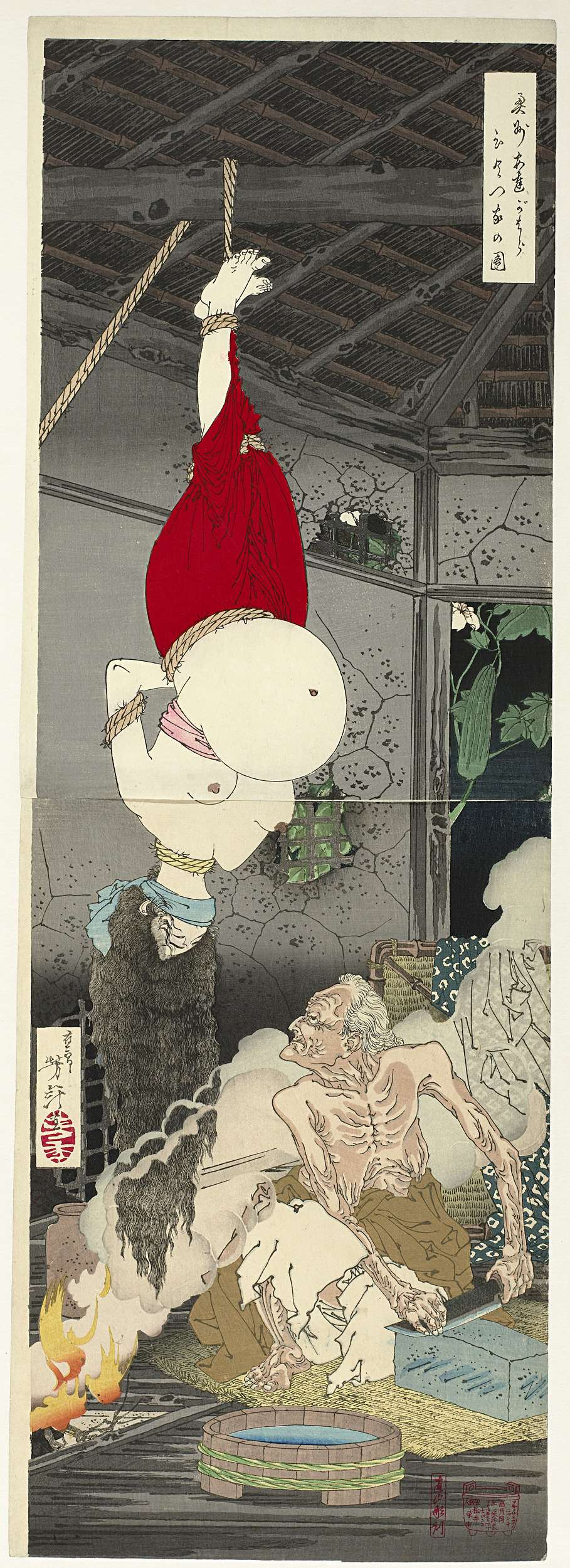
Fig.1. ‘The Picture of the Lonely House on Adachi Moor (Oshû Adachigahara hitotsuya no zu)‘, published in 1885. Designed by Tsukioka Yoshitoshi
Kitchen Knife
In a solitary shack in the field of Adachigahara at night, a sadistic hag is about to hack with a kitchen knife a pregnant woman who is bound half-naked and hung upside down from the ceiling over a fire.
Gruesome
This is a gruesome scene indeed. And what you, as an observer, expect, is in fact going to happen: the old hag (aka.The Hag of Adachi Moor) is going to cut open the pregnant woman’s belly in order to get at the unborn child, whose blood she needs to fabricate some magical elixir.
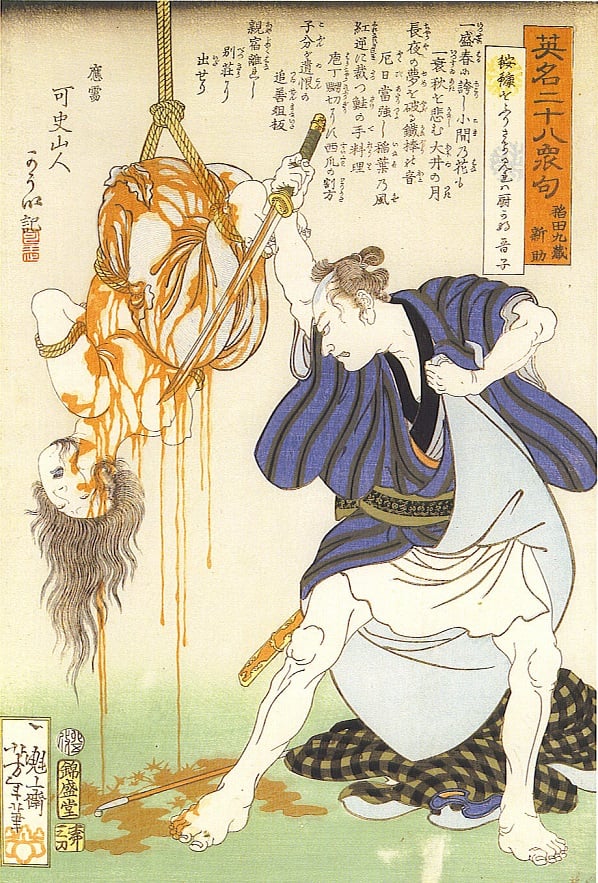
Fig.2. ‘Inada Kyuzo Shinsuke: Woman suspended from a rope‘ (1867) from the series ‘Twenty-eight Famous Murders With Verse“‘ by Tsukioka Yoshitoshi
Total Evil
More than any other design by Yoshitoshi this print has always evoked abhorrence, probably because of its combination of powerlessness and total evil, and because of the murder of mother and child that is going to be committed.
Bloody
A bloody battle between two warriors can be dismissed much more easily, even the prints from Yoshitoshi’s series Twenty-eight Famous Murders With Verse (Fig.2) are not as overpowering as this design. It must be stated, however, that Yoshitoshi was not the auctor intellectualis of this design.
Flaccid Breasts
Kuniyoshi made use of the Lonely House theme several times (Fig.3) and as a young man Yoshitoshi must have seen, or even collaborated on these designs. The compositional elements are always the same: the old hag with her flaccid breasts, the exterior gourd vine, the decaying house, the knife.
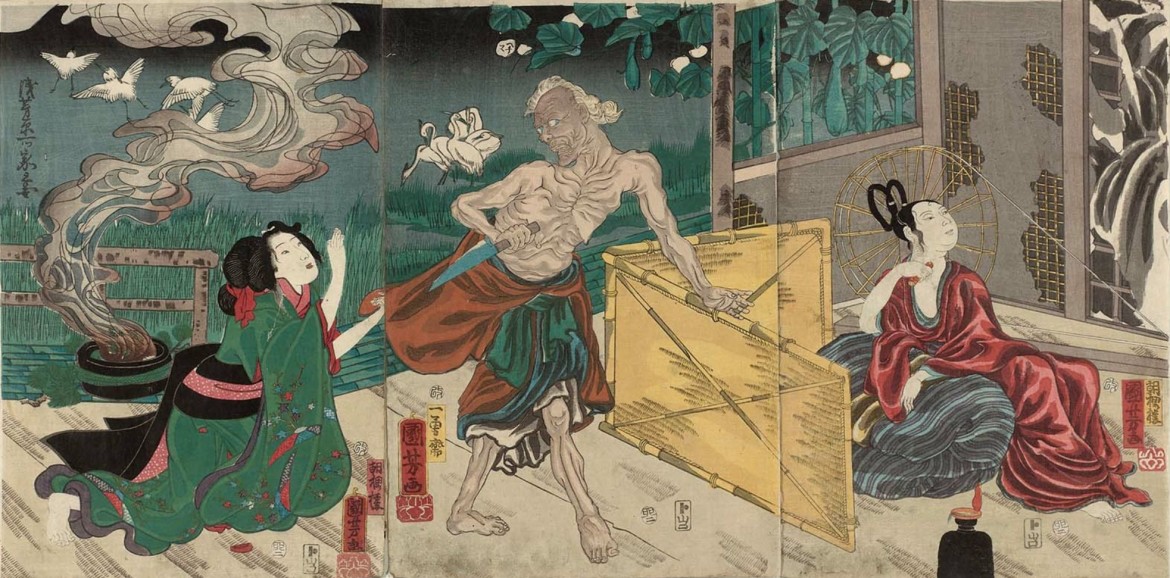
Fig.3. ‘The Lonely House at Asajigahara (Asajigahara hitotsuya no zu)‘ (c.1855) by Utagawa Kuniyoshi (Source: MFA Boston)
Old Hag
The old hag reappears in 1890 in Yoshitoshi’s series One Hundred Aspects of the Moon. In the same year Yoshitoshi designed a triptych showing Onoe Kikugorô V (1844-1903) in the kabuki play Adachigahara (also called Hitotsuya), which was performed at the theatre, Ichimuraza, on 4 May 1890.
Pregnant Mistress
The theme has also been adopted by subsequent artists for questionable purposes. In his book Erotique du Japon, Théo Lésoualc’h, for example, reproduces a photograph (see picture!) made by the painter Itô Seiyu in the beginning of this century. It shows his pregnant mistress bound with ropes and hanging from the ceiling in an identical way.
More Of The Old Hag
Yoshitoshi was fascinated and excelled at this subject since he created several prints about it that are among his best. In the following article you can find such an example and we also look at some designs inspired on the same subject by his teacher Kuniyoshi.
Click HERE for the follow-up!
Source: ‘Beauty & Violence, Japanese Prints by Yoshitoshi 1839-1892′ by Eric van den Ing and Robert Schaap



